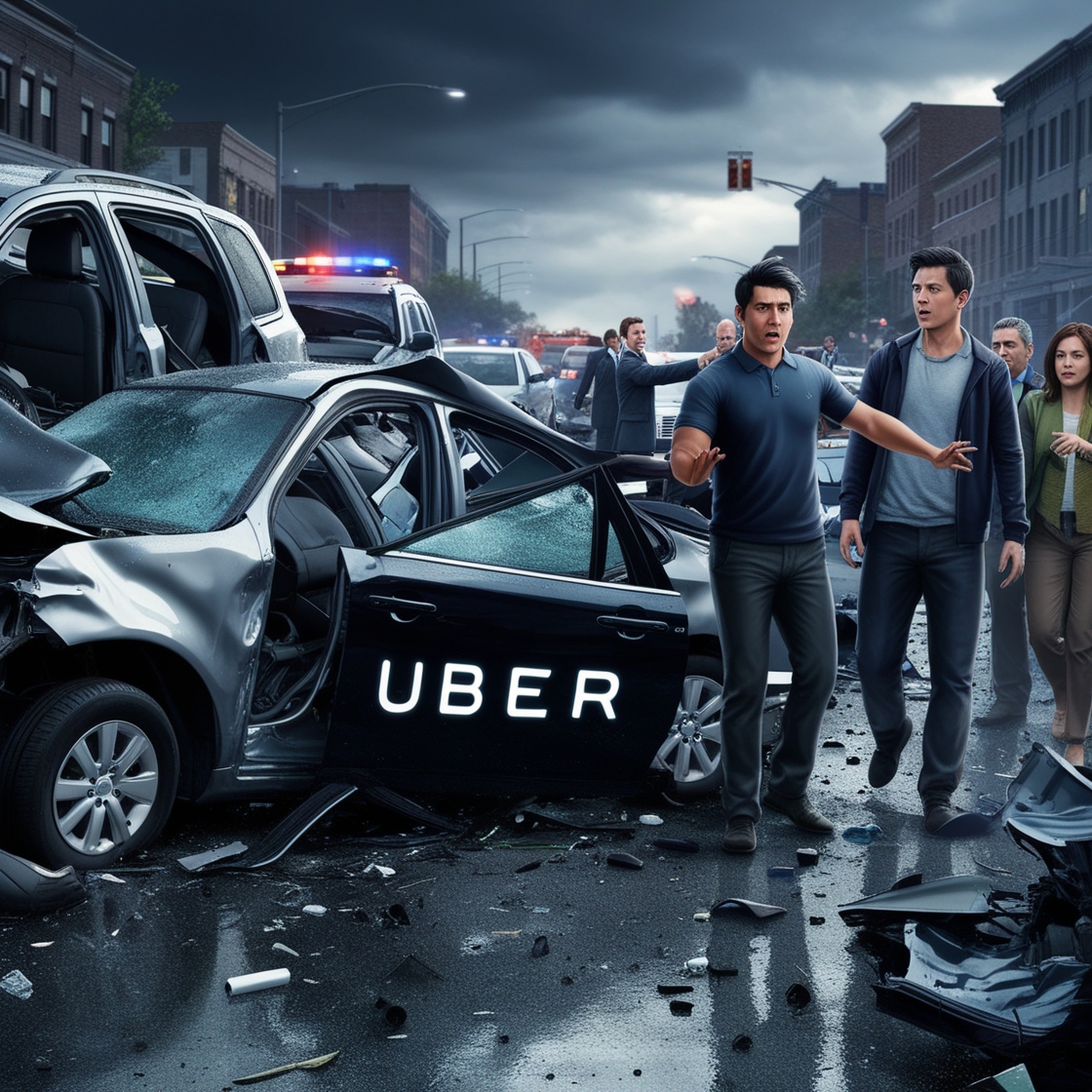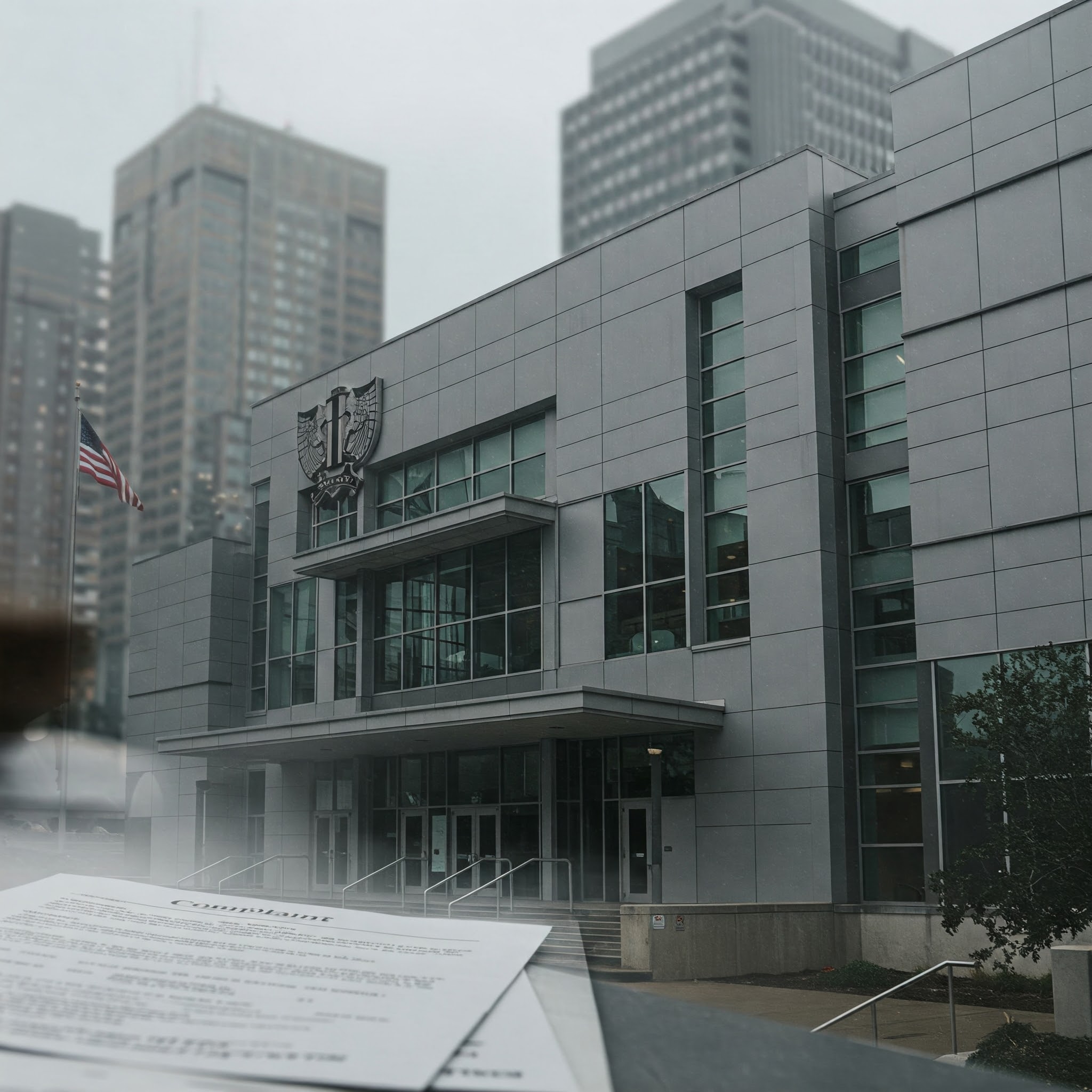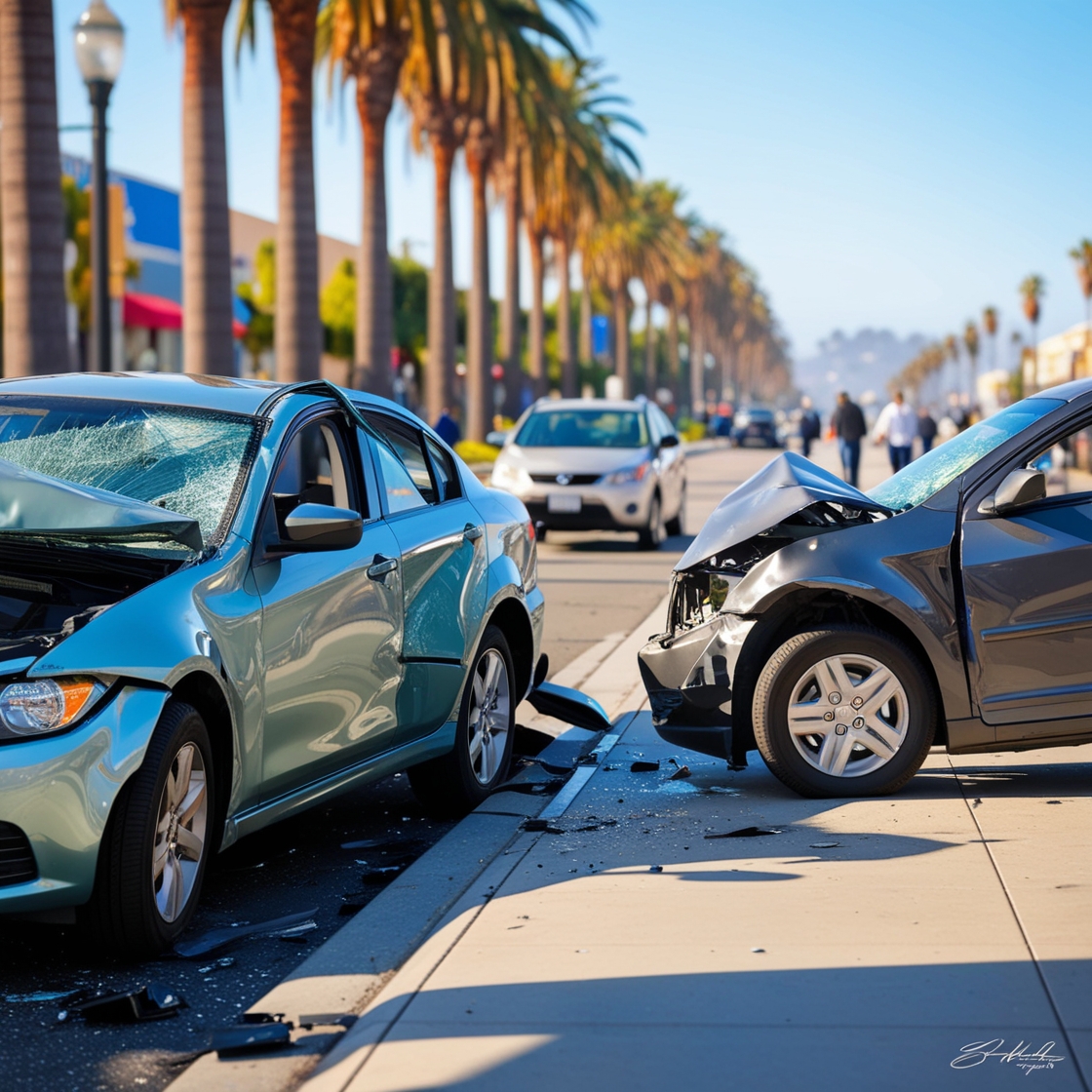
Who’s Liable in a Multi-Car Crash Involving Uber?
Multi-car accidents involving rideshare vehicles like Uber create complex liability scenarios that can leave victims confused about their rights and options for compensation. Unlike typical two-vehicle collisions, these chain-reaction crashes involve multiple parties, insurance policies, and potential sources of liability that require careful legal analysis to untangle.
When an Uber vehicle becomes part of a multi-car pileup, determining fault and securing fair compensation becomes significantly more challenging. The presence of commercial rideshare operations introduces additional layers of insurance coverage, corporate liability considerations, and regulatory compliance issues that don’t exist in standard vehicle accidents.
Understanding who bears responsibility in these situations is crucial for anyone involved in such crashes, whether as an Uber passenger, driver, or occupant of another vehicle. The stakes are often high, with severe injuries and substantial property damage common in multi-vehicle collisions.
Understanding Multi-Car Accidents Involving Uber
Multi-car accidents occur when three or more vehicles collide in a chain reaction, often triggered by an initial impact that causes subsequent crashes. These incidents frequently happen on highways, busy intersections, or during adverse weather conditions where visibility and stopping distances become critical factors.
When an Uber vehicle participates in such crashes, the complexity increases exponentially. The rideshare driver may be actively transporting passengers, en route to pick up riders, or driving for personal reasons. Each scenario carries different insurance implications and liability considerations under Uber’s multi-tiered coverage system.
The timing of the accident relative to the driver’s rideshare activity plays a crucial role in determining which insurance policies apply. Uber maintains different coverage levels depending on whether the driver is offline, available but without a ride request, en route to pickup, or actively transporting passengers.
Chain-reaction accidents involving rideshare vehicles often result in more severe injuries due to the multiple impacts and higher speeds typically involved. Passengers in Uber vehicles may be particularly vulnerable since they lack control over the vehicle and may not anticipate sudden stops or collisions.
Legal Framework for Uber Accident Liability
Uber’s Insurance Coverage Tiers
Uber operates under a sophisticated insurance structure designed to provide coverage throughout different phases of rideshare activity. Understanding these tiers is essential for determining liability and available compensation in multi-car accidents.
Period 0: Personal Use When Uber drivers operate their vehicles for personal purposes with the app turned off, only their personal auto insurance applies. Uber provides no coverage during this period, making the driver personally responsible for any accidents that occur.
Period 1: Available but No Ride Request Once drivers activate the Uber app and become available for rides, Uber provides contingent liability coverage of $50,000 per person, $100,000 per accident for bodily injury, and $25,000 for property damage. This coverage only applies if the driver’s personal insurance denies the claim.
Period 2: En Route to Pickup After accepting a ride request but before passenger pickup, Uber provides $1 million in third-party liability coverage, plus uninsured/underinsured motorist protection and contingent comprehensive and collision coverage.
Period 3: Passenger in Vehicle During active rides with passengers in the vehicle, Uber maintains its highest coverage level: $1 million in third-party liability coverage and $1 million in uninsured/underinsured motorist protection.
California Comparative Negligence Laws
California follows a pure comparative negligence system that significantly impacts multi-car accident claims involving Uber vehicles. Under this system, injured parties can recover damages regardless of their degree of fault, though their compensation is reduced by their percentage of responsibility.
This legal principle becomes particularly complex in multi-vehicle crashes where multiple parties may share responsibility. Each driver’s degree of fault must be carefully evaluated, considering factors like speed, following distance, traffic violations, and reaction times.
For Uber passengers, comparative negligence typically doesn’t apply since they have no control over the vehicle’s operation. However, passengers who engage in behavior that contributes to accidents, such as distracting the driver or failing to wear seatbelts, may face reduced compensation under certain circumstances.
Determining Fault in Multi-Car Uber Accidents
Primary vs. Secondary Liability
Multi-car accidents involving Uber vehicles often involve both primary and secondary liability theories. The driver who initially causes the chain reaction typically bears primary liability, while subsequent drivers may face secondary liability if they could have reasonably avoided contributing to the overall crash.
Determining primary fault requires thorough investigation of the initial trigger event. Common causes include rear-end collisions due to following too closely, sudden lane changes without adequate clearance, or failure to maintain control during adverse conditions.
Secondary liability analysis focuses on whether subsequent drivers in the chain reaction exercised reasonable care under the circumstances. Factors include whether they maintained safe following distances, remained alert to traffic conditions, and took appropriate evasive action when possible.
Evidence Collection and Analysis
Successful multi-car accident claims require comprehensive evidence gathering to establish fault and damages. Critical evidence includes police reports, traffic camera footage, witness statements, vehicle damage analysis, and expert accident reconstruction.
Cell phone records and GPS data from Uber’s system can provide valuable insights into driver behavior immediately before crashes. These records may reveal whether drivers were distracted by app notifications, navigation systems, or passenger interactions.
Skid marks, debris patterns, and final vehicle positions help accident reconstruction experts determine speeds, impact angles, and sequence of events. This technical analysis proves crucial in complex multi-vehicle scenarios where witness accounts may conflict.
Medical records and expert testimony establish the extent of injuries and their connection to specific impacts within the multi-car sequence. This documentation becomes essential for securing appropriate compensation for medical expenses, lost wages, and pain and suffering.
Insurance Coverage in Multi-Car Uber Crashes
Coordinating Multiple Insurance Policies
Multi-car accidents involving Uber vehicles typically trigger multiple insurance policies simultaneously. These may include Uber’s commercial coverage, the rideshare driver’s personal policy, and insurance from other involved vehicles.
Policy coordination follows specific hierarchies established by state law and individual policy terms. Generally, Uber’s insurance serves as primary coverage during active rideshare periods, while other policies may provide secondary or excess coverage.
Subrogation rights allow insurance companies to seek reimbursement from other insurers when their coverage pays claims that should be covered by different policies. This process can significantly impact settlement negotiations and final compensation amounts.
Uber’s $1 Million Policy Application
Uber’s $1 million liability policy applies during periods 2 and 3 of rideshare activity, providing substantial coverage for multi-car accident victims. However, accessing this coverage requires proving that the accident occurred during covered rideshare activity.
The policy covers bodily injury and property damage claims from third parties, including occupants of other vehicles involved in multi-car crashes. Coverage also extends to Uber passengers through the uninsured/underinsured motorist provisions.
Policy limits may be insufficient in catastrophic multi-car accidents involving multiple severe injuries. In such cases, victims may need to pursue additional compensation through personal injury lawsuits against individual drivers or seek coverage from multiple available policies.
Rights and Remedies for Different Parties
Uber Passenger Rights
Uber passengers enjoy strong protection in multi-car accidents due to the company’s comprehensive insurance coverage and their lack of fault in causing crashes. Passengers can typically pursue compensation regardless of whether their Uber driver or another party caused the accident.
Available compensation includes medical expenses, lost wages, pain and suffering, and property damage to personal items. Passengers with severe injuries may also recover damages for permanent disability, future medical care, and diminished earning capacity.
Uber’s insurance provides both liability coverage and uninsured/underinsured motorist protection, ensuring passengers have recourse even when other drivers lack adequate insurance. This dual protection creates multiple avenues for compensation recovery.
Other Vehicle Occupants
Occupants of non-Uber vehicles involved in multi-car crashes have various options for compensation depending on fault determination and available insurance coverage. If the Uber driver caused the initial collision, victims can pursue claims against Uber’s $1 million policy.
When multiple vehicles share fault, comparative negligence principles determine each party’s responsibility and corresponding compensation rights. Victims may need to pursue claims against multiple insurance policies to secure full compensation.
Uninsured/underinsured motorist coverage from victims’ own policies may provide additional protection when other parties lack sufficient insurance. This coverage becomes particularly valuable in multi-car accidents with extensive damages.
Uber Driver Liability
Uber drivers involved in multi-car accidents face potential personal liability beyond their insurance coverage, particularly if their actions were egregious or violated company policies. Drivers may be personally sued for damages exceeding available insurance limits.
Professional drivers have higher duties of care than ordinary motorists, potentially increasing their liability exposure in negligence claims. Courts may hold rideshare drivers to enhanced standards given their commercial driving activity.
Criminal charges may apply if drivers were under the influence, texting while driving, or committed other traffic violations contributing to multi-car crashes. Such charges can complicate insurance coverage and increase personal liability exposure.
Legal Steps After an Uber Multi-Car Crash
Immediate Post-Accident Actions
The moments following a multi-car accident involving Uber vehicles are critical for protecting legal rights and gathering essential evidence. Victims should prioritize personal safety while taking steps to document the scene and preserve their claims.
Call emergency services immediately to report the accident and request medical attention for injured parties. Police reports provide official documentation of the crash and often include preliminary fault determinations that influence insurance investigations.
Document the scene thoroughly with photographs of vehicle damage, road conditions, traffic signals, and any contributing factors like weather or construction zones. Collect contact information from all drivers, passengers, and witnesses present at the scene.
Notify Uber about the accident through their app or customer service line, particularly if you were a passenger or if the crash involved an active ride. This notification triggers Uber’s claims process and helps preserve evidence from their systems.
Evidence Preservation
Preserving evidence quickly after multi-car Uber accidents is crucial since physical evidence may disappear and witness memories fade over time. Professional legal assistance can help coordinate comprehensive evidence gathering efforts.
Vehicle inspection should occur before repairs begin, as damage patterns provide valuable information about impact sequences and speeds. Professional accident reconstruction experts can analyze this evidence to determine fault and causation.
Electronic evidence from smartphones, vehicle computers, and Uber’s systems may contain critical information about driver behavior immediately before crashes. This data often requires specialized technical knowledge to extract and interpret properly.
Medical documentation should begin immediately with emergency room visits and continue with follow-up care from specialists. Comprehensive medical records establish injury causation and support compensation claims for current and future treatment needs.
Common Challenges and How to Address Them
Multiple Insurance Companies
Dealing with multiple insurance companies in multi-car Uber accidents creates significant challenges for injury victims who may lack experience navigating complex commercial claims processes. Each insurer has different procedures, coverage limits, and settlement approaches.
Insurance companies may attempt to shift liability to other parties or policies to minimize their exposure. This practice, known as coverage denial or limitation, requires skilled legal advocacy to overcome and secure appropriate compensation.
Coordination between multiple insurers can delay claim resolution and complicate settlement negotiations. Professional legal representation helps manage these relationships and expedite the claims process while protecting victims’ interests.
Proving Uber Driver Status
Establishing the Uber driver’s status at the time of multi-car accidents is essential for determining available insurance coverage and potential compensation sources. Disputes over driver status can significantly impact claim values and recovery options.
Uber maintains electronic records of driver activity, including app status, ride requests, and passenger pickup/dropoff times. Accessing this information typically requires legal action or formal discovery processes in litigation.
Driver testimony about their rideshare activity may conflict with electronic records, particularly when potential liability or insurance coverage is at stake. Independent verification through Uber’s systems provides the most reliable evidence of driver status.
Complex Fault Determination
Multi-car accidents involving Uber vehicles present unique challenges in fault determination due to the number of parties involved and the complexity of chain-reaction sequences. Traditional fault analysis methods may be insufficient for these complex scenarios.
Professional accident reconstruction becomes essential for analyzing multi-vehicle crash dynamics and determining each party’s contribution to the overall incident. This analysis often requires extensive technical expertise and sophisticated modeling software.
Witness testimony may be unreliable or conflicting in multi-car scenarios where events unfold rapidly and observers may have limited visibility of the entire sequence. Physical evidence and expert analysis often provide more reliable fault determination.
Comparative Negligence in Multi-Vehicle Scenarios
California’s Pure Comparative Negligence Rule
California’s pure comparative negligence system creates unique advantages in multi-car Uber accidents where multiple parties may share fault. Unlike modified comparative negligence states, California allows victims to recover damages regardless of their fault percentage, though awards are reduced proportionally.
Fault allocation among multiple parties requires careful analysis of each driver’s actions and their contribution to the overall crash sequence. Even drivers who are primarily at fault can recover damages from other negligent parties, though their recovery will be reduced by their percentage of responsibility.
Strategic legal representation becomes crucial for minimizing clients’ fault percentages while maximizing other parties’ responsibility. This process often involves detailed accident reconstruction and expert testimony to support favorable fault determinations.
Impact on Compensation
Comparative negligence directly reduces compensation awards based on the victim’s percentage of fault. In multi-car scenarios, California’s pure comparative negligence system allows recovery even for parties who are primarily at fault, though their compensation is reduced proportionally.
Uber passengers typically face minimal comparative negligence exposure since they have no control over vehicle operation. However, passengers who distract drivers or fail to use safety restraints may face some fault allocation in severe cases.
Multiple defendants in multi-car accidents may each bear responsibility for the full amount of damages under joint and several liability principles, providing victims with multiple recovery sources and protecting against uncollectible judgments.
Compensation Available in Multi-Car Uber Accidents
Economic Damages
Economic damages in multi-car Uber accidents include quantifiable financial losses such as medical expenses, lost wages, and property damage. These damages are typically easier to calculate and prove than non-economic losses.
Medical expenses may be substantial in multi-car crashes due to the severity of injuries commonly associated with multiple impacts. Compensation should include current treatment costs, future medical care, rehabilitation, and assistive devices or modifications.
Lost wages encompass both current income loss and diminished future earning capacity for victims with permanent disabilities. Professional economic analysis may be necessary to calculate lifetime earning losses for severely injured victims.
Property damage extends beyond vehicle repair or replacement to include personal property destroyed in crashes. Uber passengers may recover compensation for damaged electronics, luggage, or other personal items.
Non-Economic Damages
Non-economic damages address the subjective impact of multi-car accidents on victims’ lives, including pain and suffering, emotional distress, and loss of life enjoyment. These damages often represent the largest component of significant injury claims.
Pain and suffering compensation recognizes the physical discomfort and mental anguish associated with crash injuries and recovery processes. Severe injuries requiring multiple surgeries or long-term treatment typically justify substantial pain and suffering awards.
Emotional distress damages may apply when victims develop psychological conditions like post-traumatic stress disorder following traumatic multi-car accidents. Professional mental health treatment and testimony support these claims.
Loss of consortium claims allow family members to recover for the impact of severe injuries on relationships and household contributions. These claims require careful documentation of the injury’s effect on family dynamics and responsibilities.
When to Sue Uber Directly
Corporate Liability Theories
Direct lawsuits against Uber Corporation may be appropriate when the company’s policies, training, or oversight contributed to multi-car accidents. These claims typically involve more complex legal theories than standard negligence claims against individual drivers.
Negligent hiring or retention claims may apply if Uber failed to adequately screen drivers or allowed dangerous drivers to continue operating. These claims require evidence of prior incidents or violations that should have prompted action.
Vicarious liability theories attempt to hold Uber responsible for driver actions based on the employment or agency relationship. Courts have reached varying conclusions on whether rideshare drivers are employees or independent contractors for liability purposes.
Product liability claims may arise if defects in Uber’s app or technology contributed to accidents. These claims focus on design defects, inadequate warnings, or failure to implement available safety features.
Strategic Considerations
Suing Uber directly provides access to deeper financial resources than individual driver defendants may possess. Corporate defendants typically carry substantial insurance coverage and have assets available to satisfy large judgments.
However, direct corporate liability claims often face significant legal hurdles and may require extensive litigation to establish responsibility. The additional time and expense must be weighed against the potential for increased recovery.
Settlement negotiations with corporate defendants may proceed differently than individual claims, potentially involving higher-level decision makers and more complex approval processes. Professional legal representation becomes essential for navigating these corporate relationships.
FAQ Section
Who is responsible for damages in a multi-car accident involving an Uber?
Responsibility in multi-car Uber accidents depends on several factors, including which driver caused the initial collision, the Uber driver’s status at the time of the crash, and each party’s degree of fault. If the Uber driver was actively driving for the platform (Periods 2 or 3), Uber’s $1 million insurance policy typically provides primary coverage. However, if another driver initiated the chain reaction, that driver’s insurance may be primarily responsible. In California’s pure comparative negligence system, multiple parties can share responsibility, and victims can recover damages regardless of their fault percentage, though compensation is reduced proportionally by their degree of responsibility.
How does Uber’s insurance work in multi-vehicle crashes?
Uber’s insurance coverage operates on a tiered system based on the driver’s activity level. During Period 1 (app on, no ride request), Uber provides limited contingent coverage. During Periods 2 and 3 (en route to pickup or with passenger), Uber provides $1 million in liability coverage plus uninsured/underinsured motorist protection. In multi-car accidents, this coverage applies to injuries and property damage to all affected parties, not just Uber passengers. The policy coordinates with other insurance coverage from involved vehicles, typically serving as primary coverage during active rideshare periods.
Can Uber passengers sue for damages in multi-car accidents?
Yes, Uber passengers have strong legal rights to compensation in multi-car accidents. Passengers can typically pursue claims regardless of who caused the accident, as they benefit from Uber’s comprehensive insurance coverage and usually bear no fault for the crash. Available compensation includes medical expenses, lost wages, pain and suffering, and property damage. Passengers are protected by both Uber’s liability coverage and uninsured/underinsured motorist provisions, providing multiple avenues for recovery even when other drivers lack adequate insurance.
What evidence is needed to prove fault in an Uber multi-car accident?
Proving fault in multi-car Uber accidents requires comprehensive evidence including police reports, traffic camera footage, witness statements, and professional accident reconstruction analysis. Cell phone records and GPS data from Uber’s system can reveal driver behavior immediately before crashes. Physical evidence like skid marks, debris patterns, and vehicle damage help experts determine impact sequences and speeds. Medical records establish injury causation and severity. Electronic data from Uber’s app system proving the driver’s status at the time of accident is crucial for determining applicable insurance coverage.
How long do I have to file a claim after an Uber multi-car accident?
In California, the statute of limitations for personal injury claims is generally two years from the date of the accident. However, insurance claim deadlines may be shorter, often requiring notification within 30 days and formal claims within one to two years depending on the policy. Property damage claims typically have a three-year statute of limitations. These deadlines are strict, and failing to meet them can result in complete loss of compensation rights. It’s crucial to contact an attorney immediately after a multi-car Uber accident to ensure all deadlines are met and evidence is preserved.
Can I sue Uber directly for a multi-car accident?
Direct lawsuits against Uber Corporation are possible but require specific circumstances and legal theories. Claims may include negligent hiring or retention if Uber failed to properly screen dangerous drivers, vicarious liability based on the driver-company relationship, or product liability if app defects contributed to the accident. However, Uber generally classifies drivers as independent contractors rather than employees, which can limit direct corporate liability. The company’s insurance coverage often provides the primary source of compensation rather than direct corporate responsibility. These cases require sophisticated legal analysis and typically involve complex litigation.
What if the other drivers in the multi-car accident don’t have insurance?
Uninsured or underinsured drivers in multi-car accidents create additional complications, but Uber passengers and other victims still have protection options. Uber’s insurance includes uninsured/underinsured motorist coverage that protects passengers when other drivers lack adequate insurance. Victims may also have uninsured motorist coverage through their own auto insurance policies. In California, insurance companies are required to offer uninsured motorist coverage, though policyholders can reject it in writing. When multiple uninsured drivers are involved, victims may need to pursue multiple insurance sources and potentially file personal lawsuits against individual drivers.
How are damages calculated in multi-car Uber accidents?
Damage calculations in multi-car Uber accidents consider both economic and non-economic losses. Economic damages include medical expenses, lost wages, property damage, and future treatment costs. Non-economic damages cover pain and suffering, emotional distress, and loss of life enjoyment. In California’s pure comparative negligence system, total damages are reduced by the victim’s percentage of fault, but victims can recover regardless of their fault level. Severe injuries common in multi-car crashes often result in substantial compensation awards, particularly when multiple insurance policies provide coverage. Professional economic analysis may be necessary to calculate lifetime losses for permanently disabled victims.
What should I do immediately after an Uber multi-car accident?
Immediate actions after a multi-car Uber accident are crucial for protecting legal rights and preserving evidence. First, ensure personal safety and call emergency services for medical attention and police response. Document the scene thoroughly with photographs of all vehicles, road conditions, and any contributing factors. Collect contact information from all drivers, passengers, and witnesses. Notify Uber about the accident through their app or customer service to trigger their claims process. Seek immediate medical attention even for minor injuries, as adrenaline can mask serious conditions. Avoid discussing fault or making statements to insurance companies before consulting with legal counsel.
How does comparative negligence affect my compensation in a multi-car Uber accident?
California’s pure comparative negligence system allows injury victims to recover damages regardless of their percentage of fault in the accident. In multi-car scenarios, fault is allocated among all involved parties based on their contribution to the crash sequence. Your compensation is reduced by your percentage of fault – for example, if you’re found 30% at fault, your damages are reduced by 30%, but you can still recover the remaining 70%. This differs from modified comparative negligence states where high fault percentages can bar recovery entirely. Uber passengers typically face minimal fault exposure since they don’t control the vehicle. However, actions like distracting the driver or failing to wear seatbelts could potentially result in some fault allocation in extreme cases.
Credible Law
https://crediblelaw.com/


